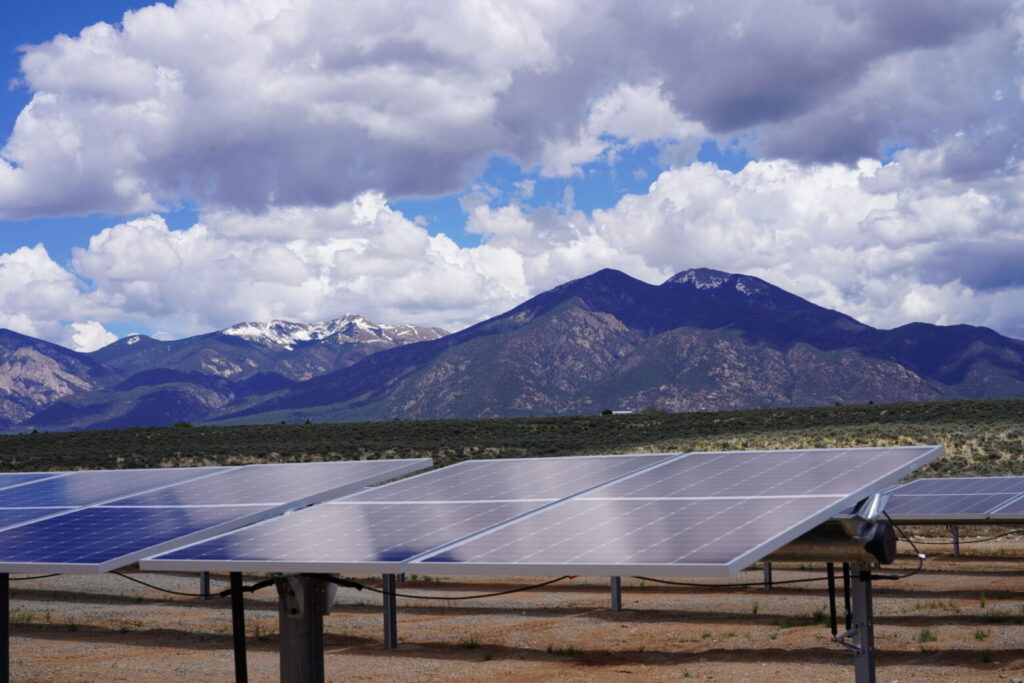
- Details
- By Chez Oxendine
- Energy | Environment
A new tribally owned solar project will help the Taos Pueblo reduce greenhouse gas emissions and energy costs for its citizens, even as it produces income and jobs for the federally recognized tribe in New Mexico.
Denver-based nonprofit International Center for Appropriate and Sustainable Technology (ICAST) will use a $10 million matching grant from the U.S. Department of Energy (DOE) to help fund a 5 megawatt solar photovoltaic and 10 megawatt hour (MWh) battery energy storage systems on the federally recognized tribe’s land.
The funding, secured by ICAST in February from the DOE’s Energy Improvements in Rural/Remote Areas (ERA) program, will cover half of the project’s predicted $20 million budget. It will also allow the tribe and its project partners to leverage local resources to provide apprenticeship opportunities and workforce training for its members.
The solar farm will be co-owned and managed by Kit Carson Electric Cooperative, the tribe’s current utility service provider. Once active, the system’s solar output should help every tribal member save on energy costs, according to Sam Lipman, director of community and utility solar development for ICAST.
The solar project will help eliminate an estimated 279,210 metric tons of greenhouse gas emissions per year over its 25-year lifespan and facilitate a 33% reduction in energy costs for 2,500 rural Taos Pueblo tribal members, according to a DOE statement.
Taos Pueblo will also directly benefit from the project's income, with an estimated annual credit of $700 per household. The project will also open up both construction and long-term maintenance jobs and other economic opportunities. In collaboration with the University of New Mexico-Taos, the initiative will provide workforce training and apprenticeship opportunities.
The project is an example of building economic development and energy resilience all at once, Lipman told Tribal Business News.
“We should be able to cover all of the tribe and then some,” Lipman said. “We’re here to help people in disadvantaged communities save money on their bills. Some of those savings should be significant.”
Planning for the project began in 2021, but accelerated in the wake of the Inflation Reduction Act, Lipman said. The IRA leveled unprecedented funding at clean energy, which opened up opportunities for those with the capacity to chase them.
That’s where groups like ICAST come in, Lipman said. The nonprofit, which supports disadvantaged communities with housing, economic development and clean energy projects, employs nine full-time grant writers to chase opportunities like ERA. The communities and organizations that ICAST serves — low-income tribes, coops, and municipalities — don’t always have that capacity, he said.
“We're kind of made for this,” Lipman said. “We even have a community development financial institution for covering things like gap funding. That includes things like construction funding or waiting award money to come from the federal government.”
